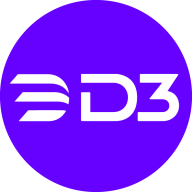

IBM Security QRadar and D3 Security are competitors in the cybersecurity domain. IBM Security QRadar appears to have an advantage in data monitoring and network analysis, while D3 Security outshines in flexibility and incident response integration.
Features: IBM Security QRadar is noted for its deep threat analytics, efficient correlation of network events, and scalability in complex environments. D3 Security is recognized for its robust automation capabilities, orchestration of incident responses, and adaptability across various ecosystems. The main difference lies in IBM Security QRadar's sophisticated threat detection compared to D3 Security's automated incident response.
Ease of Deployment and Customer Service: IBM Security QRadar offers a robust deployment framework with extensive customer support, valued for its comprehensive documentation and structured onboarding. D3 Security provides a more adaptable deployment model focusing on rapid integration and process automation, supported by responsive customer service. The primary distinction is in IBM Security QRadar's thorough setup procedures versus D3 Security's flexibility and speed in deployment.
Pricing and ROI: IBM Security QRadar involves a significant initial setup cost, which aligns with its high ROI through comprehensive threat management. D3 Security offers a flexible pricing model with a quicker ROI due to its emphasis on process automation and efficient incident response. The key difference is IBM Security QRadar's upfront investment against D3 Security's quicker payback period, potentially making D3 Security more cost-effective over time.


D3 Security provides a full-lifecycle incident management platform—one that enables multiple detection sources, enriches standards-based workflows with threat intelligence, orchestrates response, and always guides its users to conclusive remediation. The system is unique in its ability to eliminate incident recurrence, through root cause and corrective action discovery, digital forensics case management, and by generating a foundation of actionable intelligence that supports policies, countermeasures and controls.
IBM Security QRadar (recently acquired by Palo Alto Networks) is a security and analytics platform designed to defend against threats and scale security operations. This is done through integrated visibility, investigation, detection, and response. QRadar empowers security groups with actionable insights into high-priority threats by providing visibility into enterprise security data. Through centralized visibility, security teams and analysts can determine their security stance, which areas pose a potential threat, and which areas are critical. This will help streamline workflows by eliminating the need to pivot between tools.
IBM Security QRadar is built to address a wide range of security issues and can be easily scaled with minimal customization effort required. As data is ingested, QRadar administers automated, real-time security intelligence to swiftly and precisely discover and prioritize threats. The platform will issue alerts with actionable, rich context into developing threats. Security teams and analysts can then rapidly respond to minimize the attackers' strike. The solution will provide a complete view of activity in both cloud-based and on-premise environments as a large amount of data is ingested throughout the enterprise. Additionally, QRadar’s anomaly detection intelligence enables security teams to identify any user behavior changes that could be indicators of potential threats.
IBM QRadar Log Manager
To better help organizations protect themselves against potential security threats, attacks, and breaches, IBM QRadar Log Manager gathers, analyzes, preserves, and reports on security log events using QRadar Sense Analytics. All operating systems and applications, servers, devices, and applications are converted into searchable and actionable intelligent data. QRadar Log Manager then helps organizations meet compliance reporting and monitoring requirements, which can be further upgraded to QRadar SIEM for a more superior level of threat protection.
Some of QRadar Log Manager’s key features include:
Reviews from Real Users
IBM Security QRadar is a solution of choice among users because it provides a complete solution for security teams by integrating network analysis, log management, user behavior analytics, threat intelligence, and AI-powered investigations into a single solution. Users particularly like having a single window into their network and its ability to be used for larger enterprises.
Simon T., a cyber security services operations manager at an aerospace/defense firm, notes, "The most valuable thing about QRadar is that you have a single window into your network, SIEM, network flows, and risk management of your assets. If you use Splunk, for instance, then you still need a full packet capture solution, whereas the full packet capture solution is integrated within QRadar. Its application ecosystem makes it very powerful in terms of doing analysis."
A management executive at a security firm says, "What we like about QRadar and the models that IBM has, is it can go from a small-to-medium enterprise to a larger organization, and it gives you the same value."
We monitor all Security Orchestration Automation and Response (SOAR) reviews to prevent fraudulent reviews and keep review quality high. We do not post reviews by company employees or direct competitors. We validate each review for authenticity via cross-reference with LinkedIn, and personal follow-up with the reviewer when necessary.